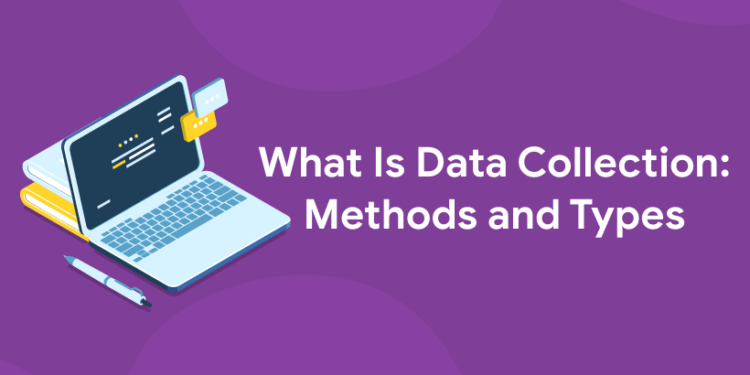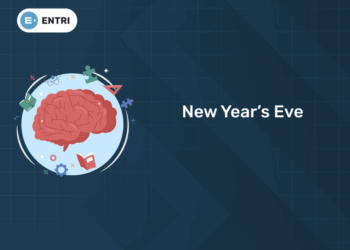Table of Contents
Data collection methods are the ways that you get your data, and they’re often used interchangeably with the terms data collection tools and data collection technologies. There are different types of data collection methods, each having its own positives and negatives.
Data collection- definition
Data collection is the process of gathering information from different sources of data collection and then analyzing it. There are many different methods of data collection, and each has its own advantages and disadvantages. The most common methods are surveys, interviews, focus groups, observations, and questionnaires. Each method has different strengths and weaknesses, so it’s important to choose the right one for your needs. For example, if you want to know what people think about a certain topic, a survey or questionnaire might be best. If you want feedback on how they experience something in person (such as new technology), an interview might be more appropriate. And if you’re looking for spontaneous comments on something that just happened, such as a sporting event or an incident in the news, an observation would likely be the best choice.
Are you aspiring for a booming career in IT? If YES, then dive in |
||
Full Stack Developer Course |
Python Programming Course |
Data Science and Machine Learning Course |
Why do we need Data Collection?
1: Which of the following algorithms is most suitable for classification tasks?
Data collection is a process of gathering information from various sources. The data collected can be either primary or secondary in nature. It is used in order to understand the current situation, trend, or problem at hand. Additionally, data collection helps businesses make informed decisions, set goals, and measure progress.
1. Surveys are perhaps the most common method of data collection. They can be administered in person, by phone, or online. When creating a survey, it is important to consider your target audience and what type of information you are hoping to collect.
2. Interviews are another popular method of data collection. Typically conducted face-to-face, they may also be done over the phone or via email. Interviews allow you to ask more specific questions as well as clarify any responses given. Like surveys, it is important to define your research objectives before conducting an interview so that you can tailor the questions accordingly.
3. Focus groups involve gathering people together with similar characteristics who will then share their thoughts on a particular topic and provide feedback on ideas put forth by researchers. As such, they are often utilized when market research needs to take place or when trying to gain insight into consumer behavior and preferences.
Enroll in our latest data science batch in Entri app
🚀 Start Coding Today! Enroll Now with Easy EMI Options. 💳✨
Equip yourself with in-demand skills to land top-tier roles in the data-driven world.
Start Learning Now with EMI OptionsDifferent methods of Data Collection
There are many different methods of data collection, and each has its own advantages and disadvantages. Some common methods include surveys, interviews, focus groups, observations, and field experiments. Each method has different strengths and weaknesses, so it’s important to choose the right one for your project. There are two methods of data collection;
- Primary
As the name suggests, primary data is collected first-hand by experts in the field. When taken care of correctly, it can provide highly accurate results; but because it involves conducting interviews and other such tasks, it can take up a lot of time or cost too much money. The researcher’s first-hand account is data that is collected without any other research. Primary data is the information being collected from the start and can be highly accurate, but it may take time and money to collect.
2. Secondary
Secondary data is second-hand data that has been analyzed before, which could mean its first-hand information collected by others or researched information found online. It can also be qualitative in nature but typically quantitative. Even though this type of data is easy and inexpensive to acquire, the issue becomes the validity and authenticity when it comes down to what’s accurate because qualitative data makes up a majority of secondary research. Secondary data is information collected by other parties and already statistically analyzed. It’s cheaper than primary data and easier to get, but it raises concerns about accuracy.
Specific Data Collection Techniques
There are many different data collection methods and types, each with its own advantages and disadvantages. Some common methods include surveys, interviews, focus groups, and observations. Each method has its own strengths and weaknesses, so it’s important to choose the right one for your needs. Here’s a brief overview of some of the most common data collection methods and how they work.
Primary Data Collection
The methods of primary data collection are as follows
-
Interviews.
A researcher using this method is able to collect a large amount of data in a relatively short amount of time. However, there are some disadvantages to using this method. First, the validity of the data collected may be questionable as respondents may not be truthful or accurate in their answers. Second, the data collected may be biased if the sample of people surveyed is not representative of the population as a whole.
-
Projective Technique.
Projective data gathering is an indirect interview in which people can refuse to answer questions because they know the reason behind it. For example, someone might decline to offer their opinion about telephone services if posted by a representative of the carrier company. In projective data gathering, those conducting the interviews ask incomplete questions and allow those interviewed to fill out their responses with what they think; including how they feel or what attitude they take towards this subject matter.
enroll to learn data science
Secondary Data Collection
There are no specific collection methods. Instead, since the information has already been collected, the researcher consults various data sources, such as:
- Financial Statements
- Sales Reports
- Retailer/Distributor/Deal Feedback
- Customer Personal Information (e.g., name, address, age, contact info)
- Business Journals
- Government Records (e.g., census, tax records, Social Security info)
- Trade/Business Magazines
- The Internet
Data Collection Tools
There are many different data collection tools available, each with its own advantages and disadvantages. Some common data collection methods include surveys, interviews, focus groups, observations, and secondary data sources of data collection. The best method for collecting data will depend on the type of data you need to collect. The important data collection tools are; word association, sentence completion, role-playing, in-person surveys, mobile surveys, phone surveys, and observation method of data collection.
Click here to learn data science in Entri app
🚀 Start Coding Today! Enroll Now with Easy EMI Options. 💳✨
Equip yourself with in-demand skills to land top-tier roles in the data-driven world.
Start Learning Now with EMI OptionsImportance of ensuring Accurate and Appropriate Data Collection
It is a process of gathering information from various sources. The data collected can be in the form of text, images, videos, etc. It is important to ensure that the data collected is accurate and appropriate for the purpose it will be used for. There are many methods and types of data collection, each with their own advantages and disadvantages. The most important thing is to choose the right observation method of data collection and type of data collection for your specific needs. Here we list some of the most common types and how they are used:
– Censuses – These are surveys conducted by governments or other authorities to gather population data.
– Surveys – Surveys provide insight into people’s opinions about different topics through questioning them. They may also involve observing subjects’ behaviors as well as asking questions.
– Document analysis – Documents include everything from websites, emails, texts, blog posts and more. They can provide insight into a person’s thoughts or feelings on certain topics based on what they say or write about them online or in an email.
The Integrity of Data Collection
Data collection is a process of gathering data from primary or secondary sources. Data can be collected manually or through automated means. The main types of data collection are observational, experimental, and survey. Each has its own advantages and disadvantages, so it’s important to choose the right method for your needs.
-Observational: this approach involves observing what happens in the natural world without interfering with what is happening. Examples include watching how birds flock together when food is plentiful and documenting the number of ant colonies in an area over time.
-Experimental: one variable (the independent variable) is manipulated while another (the dependent variable) is measured to see if there’s a correlation between them. Examples include exposing groups of lab rats to different light cycles to see how that affects their weight gain over time, or testing whether people who listen to classical music before going into surgery experience less pain during recovery.
Common Challenges
It can be a daunting task, especially if you’re not sure where to start. But don’t worry! We’ve compiled a list of common challenges and how to overcome them.
Not knowing what data you need: Before you start collecting data, it’s important to have a clear idea of what you need. Otherwise, you’ll just be wasting time and sources of data collection. Figure out what your goal is and what kind of data will help you achieve it. For example, are you trying to find out how much inventory there is in stock? Do you want to know the cost of gas in the area? Once you know what kind of data matters most for your project, then find a way to collect that information (e.g., do research on the internet).
Key steps in Data Collection
There are a few key steps here, no matter what observation method of data collection or types you use.
1. Need to develop your research goals and objectives.
2. Need to decide on your target population.
3. Need to determine what type of data you need.
4. Need to select your data collection methods.
5. Need to collect your data.
6. Need to clean and organize your data.
7. Need to analyze your data.
A couple of points before we move forward: Data is everywhere but there is no set definition for it, so let’s start with defining data as a set of facts. Data can be found everywhere around us and is used by different groups for different purposes. As researchers, we define data as a set of facts, whether they come from surveys or experiments. But people may have other definitions based on their own contexts and purposes for using it.
be a data scientist ! enroll to get a free demo video !
Best Practices
There are a variety of different data collection methods and types that businesses can use to gather information. The most common methods include surveys, interviews, focus groups, and observations. Each method has its own advantages and disadvantages, so it’s important to choose the right one for your needs. Here’s a quick overview of each method Surveys- Surveys are designed to measure people’s opinions on an issue. Surveys can be conducted in person or online with tools like SurveyMonkey. They’re great for when you want a lot of opinions from people all over the world about an issue, but they don’t work well if you want specific feedback on how people feel about something specific because they’re too broad. Interviews- Interviews give you access to more individualized feedback than surveys do, but they’re more time-consuming and expensive because they require a lot of preparation and resources (such as finding interviewees). They also tend to be less anonymous than other methods because they typically involve face-to-face contact with respondents which could lead to some bias in responses.












